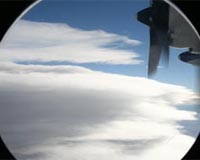| . |  |
. |
Gothenburg, Sweden (SPX) May 19, 2009 Researchers at the University of Gothenburg, Sweden, have developed a new method to study single cells while exposing them to controlled environmental changes. The unique method, where a set of laser tweezers move the cell around in a microscopic channel system, allows the researchers to study how single cells react to stress induced by a constantly changing environment. Studies on how cells react to changes in their environment, such as reduced availability of nutrients, have traditionally used cultures consisting of millions of cells. While such studies show how cells on average react to a new environment, they say nothing about individual variation, for example how quickly a single cell responds.
Catches and moves cells Placing the cell in a system of channels made of silicone, in which each channel is finer than a human hair, enables the researchers to add and remove substances so that the environment surrounding a single cell changes in a split second - while at the same time watching the reactions through a microscope.
New information
How cells survive 'The method can be used to reveal how a cell reacts to stress induced by a change in its environment. The information gained from this may eventually lead to a better understanding of how cells work and what they do to stay alive and healthy in a constantly changing environment', says Eriksson. Share This Article With Planet Earth
Related Links University of Gothenburg Darwin Today At TerraDaily.com
 First Direct Observations Of Biological Particles In High-Altitude Clouds
First Direct Observations Of Biological Particles In High-Altitude CloudsSan Diego CA (SPX) May 19, 2009 A team of atmospheric chemists has moved closer to what's considered the "holy grail" of climate change science: the first-ever direct detections of biological particles within ice clouds. The team, led by Kimberly Prather and Kerri Pratt of the University of California at San Diego, Scripps Institution of Oceanography, sampled water droplet and ice crystal residues at high speeds while fl ... read more |
|
| The content herein, unless otherwise known to be public domain, are Copyright 1995-2009 - SpaceDaily. AFP and UPI Wire Stories are copyright Agence France-Presse and United Press International. ESA Portal Reports are copyright European Space Agency. All NASA sourced material is public domain. Additional copyrights may apply in whole or part to other bona fide parties. Advertising does not imply endorsement,agreement or approval of any opinions, statements or information provided by SpaceDaily on any Web page published or hosted by SpaceDaily. Privacy Statement |